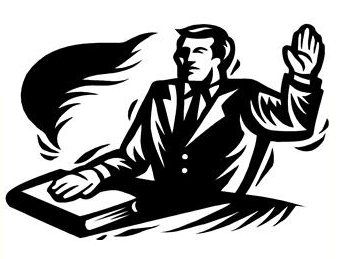eDiscovery Daily Blog
DOS and DON’TS of a 30(b)(6) Witness Deposition, Part Three
Editor’s Note: Tom O’Connor is a nationally known consultant, speaker, and writer in the field of computerized litigation support systems. He has also been a great addition to our webinar program, participating with me on several recent webinars. Tom has also written several terrific informational overview series for CloudNine, including his most recent one, What is the Future of the Legal Technology Conference? Now, Tom has written another terrific overview regarding the state of legal technology conferences titled DOS and DON’TS of a 30(b)(6) Witness Deposition that we’re happy to share on the eDiscovery Daily blog. Enjoy! – Doug
Tom’s overview is split into six parts, so we’ll cover each part separately. The first part was Monday and the second part was Wednesday, here’s the third part.
Proposed Rule Change
The current Rule provides little guidance on how much notice is required, how a 30(b)(6) deposition counts towards the limit and duration of depositions, the presumptive limit on the number of deposition topics and the process for objecting to, and resolving disputes about, the scope of a notice.
With that in mind, the Advisory Committee on Civil Rules began considering a variety of changes to the Rule beginning in April 2016. The amendment eventually put forth by the Committee says that “[b]efore or promptly after the notice or subpoena is served, and continuing as necessary, the serving party and the organization must confer in good faith about the number and description of the matters for examination and the identity of each person the organization will designate to testify.”
Public comments on the proposed changes closed in February of this year and many major corporations voiced concern over these proposed changes. Over 100 organizations (including Ford, Microsoft, and Comcast) submitted a joint public comment letter to the committee objecting to the new language.
Specifically, these organizations voiced the following concerns:
- An organization should be able to retain the exclusive right to identify Rule 30(b)(6) witnesses and the subject matters these witnesses will testify about without input from opposing counsel.
- The rule needs to provide more guidance. For example, the language requiring counsel to confer about “the number and description of the matters for examination” is unclear and fails to lay out with specificity what the parties need to address prior to the deposition.
- An amendment forcing the parties to confer would increase, rather than decrease, discovery disputes.
The Committee felt, however, that the amendment will not increase discovery disputes, but instead reduce these issues and streamline litigation. Their belief was that having the parties confer with each other prior to the deposition may help bring issues to the forefront so the court can handle the matters promptly rather than the current method of interrupting a deposition or even a trial to handle arguments about testimonial issues then.
The Draft Committee Note addresses some of the concerns that were raised and specifically reiterates that the “named organization ultimately has the right to select its designees,” and notes that “the amendment does not require the parties to reach agreement.”. The Advisory Committee’s official position paper can be found here. If approved by the Committee on Rules of Practice and Procedure, the Judicial Conference, and the Supreme Court, the Amendment would go to Congress for final approval and become effective on December 1, 2020.
We’ll publish Part 4 – Common Mistakes – next Monday.
So, what do you think? Have you ever been a 30(b)(6) deponent? Or been involved in preparing one for testimony? As always, please share any comments you might have or if you’d like to know more about a particular topic.

Sponsor: This blog is sponsored by CloudNine, which is a data and legal discovery technology company with proven expertise in simplifying and automating the discovery of data for audits, investigations, and litigation. Used by legal and business customers worldwide including more than 50 of the top 250 Am Law firms and many of the world’s leading corporations, CloudNine’s eDiscovery automation software and services help customers gain insight and intelligence on electronic data.
Disclaimer: The views represented herein are exclusively the views of the author, and do not necessarily represent the views held by CloudNine. eDiscovery Daily is made available by CloudNine solely for educational purposes to provide general information about general eDiscovery principles and not to provide specific legal advice applicable to any particular circumstance. eDiscovery Daily should not be used as a substitute for competent legal advice from a lawyer you have retained and who has agreed to represent you.

